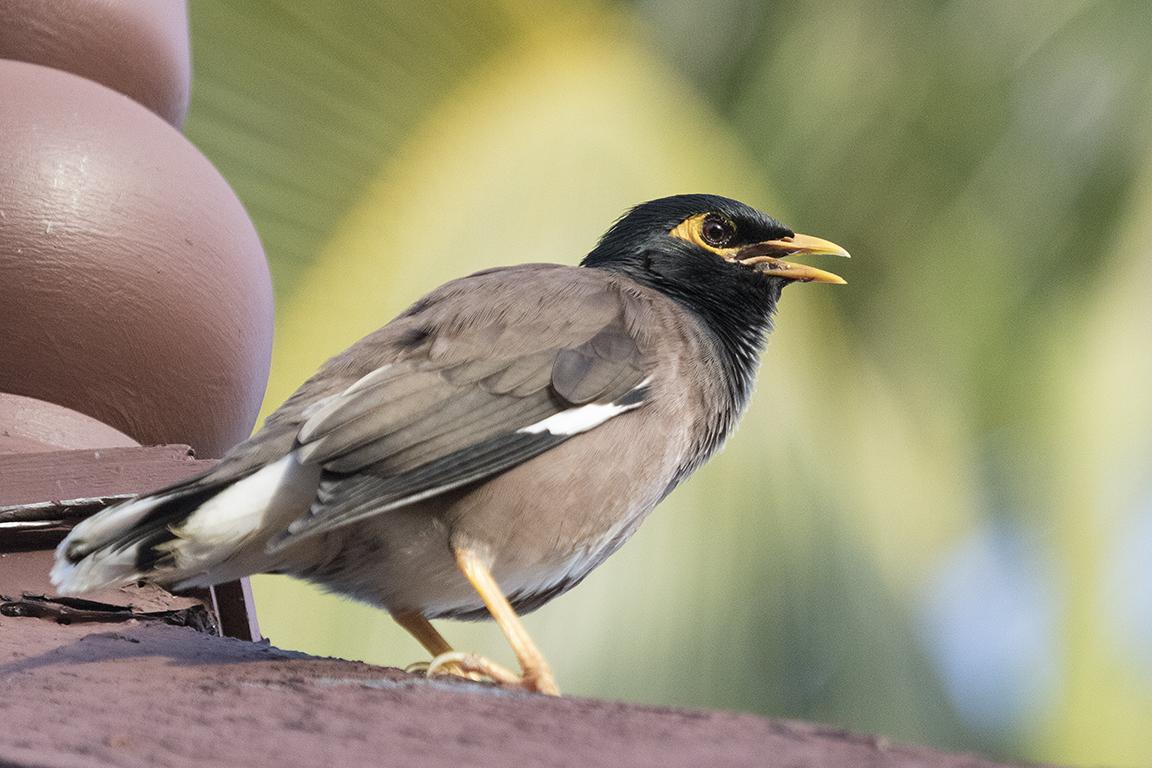Indian Myna

Phuket, Thailand
A highly successful, aggressive species, the Indian or common myna is abundant throughout Asia. It has been introduced into many other parts of the world including North America, Africa, Australia and islands in the Atlantic, Pacific and Indian Oceans where it has also thrived.
Habitat
The Indian myna inhabits open woodland, cultivated and urban and suburban environments, with populations expanding rapidly wherever it occurs.
Feeding
The Indian myna feeds mainly on the ground mostly on insects, tropical fruits, seeds and discarded human food in urban areas.
Breeding
Indian mynas pair for life and breed throughout the year. The nest is constructed in a hole in a tree or cavity in a building and made of roots, twigs, tow and rubbish with cellophane and plastic sheeting being particulalry popular. The 4-6 blue eggs are incubated by both parents who also share chick rearing.
Wildfile Specials
- The Indian myna is considered a serious threat to many crops including grapes, plums, strawberries , figs, apples, pears, guava, mangoes, breadfruit and blueberrries. Cereal crops including wheat, rice and maize are also targeted particularly near urban areas.
- Aggessive behaviour contributes to the Indian myna's success as an invasive species. They occupy the nesting holes of other birds and will even evict their chicks by grabbing them by the beak.
- In Sanskrit literature, the common mynas is named "kalahapriya" which means "one who is fond of arguments" which highlights its quarrelsome nature.
- The indian myna will occupy and defend several nesting holes simultaneously but lay eggs in only one.
- In Canberra, Australia, 110 Indian mynas were released between 1968 and 1971. By 1991, common myna population density in Canberra averaged 15 birds per square kilometer. By 1994 the average population density had reached 75 birds per square kilometer.
- Bundaberg Regional Council, in southern Queensland, offered $2 for every myna bird caught in the Childers area.
- In Hawaii, the Indian myna was introduced to control pests in sugarcane crops. But it has also spread Lantana camera, a robust weed, across the island's grasslands.
- The India myna maintains two communal roosts, one temporary near the nesting site and the other permanent and all year round. These are fiercely protected excluding other, native birds.
- Classed as one of the world's most invasive species, Indian mynas pose a threat to biodiversity, agriculture and human interest.